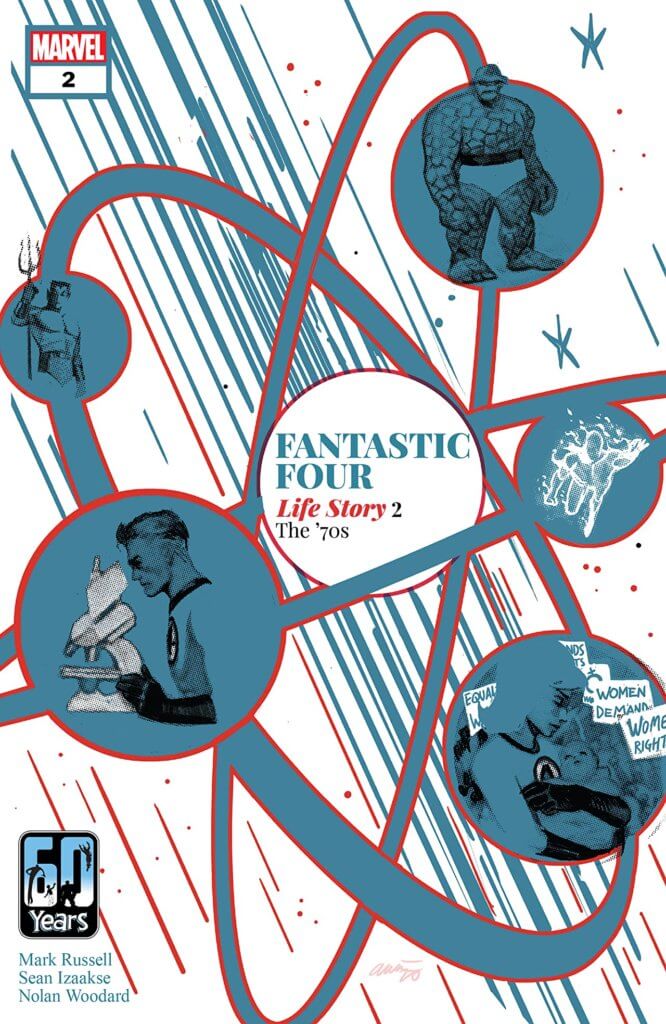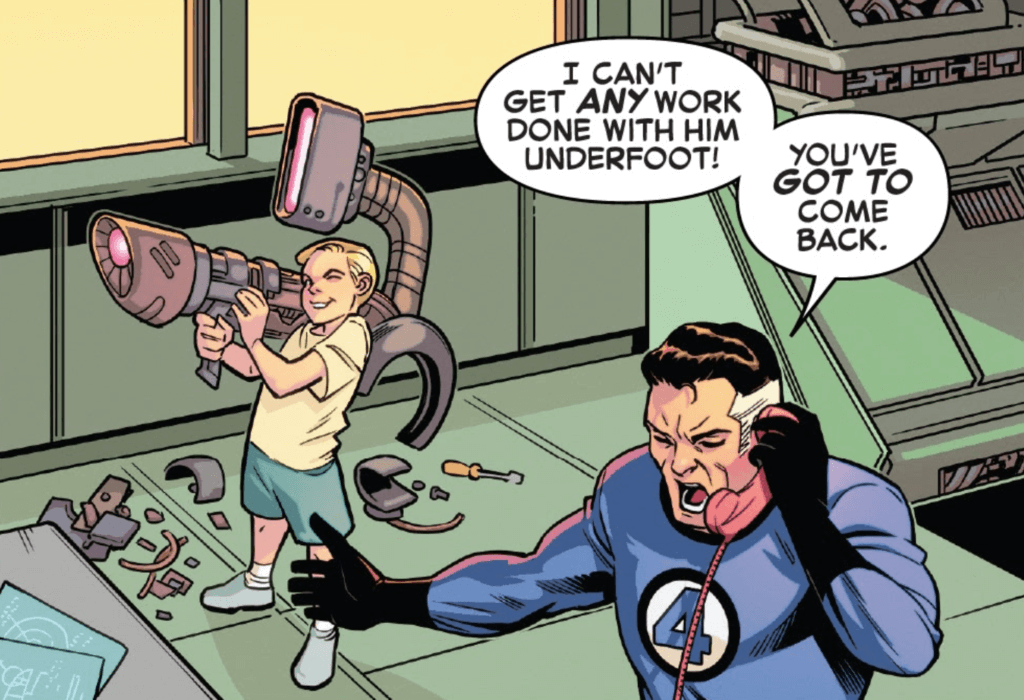- max markov
- Posts
- REVIEW: Fantastic Four Life Story #2 and Miss Representation
REVIEW: Fantastic Four Life Story #2 and Miss Representation
This article is reposted as it originally was published on WWAC on July 22nd, 2021
Marvel’s Life Story books re-contextualize Marvel’s most well-known characters as evolving and aging in “real-time” throughout their history. And for the Fantastic Four, this comes as a celebration of their 60th anniversary. A look back at their story throughout the decades seems like an excellent way to celebrate this milestone, but the memory of the Fantastic Four — just like a real memory — has altered over time.

Fantastic Four Life Story #2: The ‘70s
Daniel Acuña (Cover); ACO (Cover); VC’s Joe Caramagna (Letters); Sean Izaakse (Art); Mark Russell (Writing); Nolan Woodward (Colors); Carlos Lao (Designer)
Marvel Comics
July 19, 2021

Issue #1 of Fantastic Four: Life Story began in the ’60s, showing us the F4’s fateful rocket flight and the aftermath, up to the birth of Reed and Sue’s first child, Franklin. But there were changes to the team’s origin, both obvious and subtle, that affect the second issue. The lack of an established relationship between Ben and Reed is probably the most significant: before their rocket flight Ben had no established relationship with any of the other team members. As a result, Ben and Johnny’s presence in this issue remains negligible.
The changes in relationships extend even to young Franklin, who is seen by his father as a nuisance. This is a far cry from the Reed that many readers know who is fascinated by his son and delights in his childhood curiosity.

Not this guy, though!
Compounding these problems is the use of a different narrator for each issue. Issue #2 was narrated by Susan, though the issue isn’t so much about her as it is about her thoughts on Reed. As Reed becomes more and more consumed by the imminent threat of Galactus, he allies with Victor von Doom. The two begin to share a sort of folie à deux, which drives a wedge between Reed and Sue. The reader has very little reason to care about their imminent breakup, however, as we were never really shown much of their relationship in the first place.
As Reed and Doom work together to ostensibly come up with a plan (or perhaps just giant weapons) to defeat Galactus, we watch Sue struggle with her role in her family and society. The conflict she faces is that she feels invisible and has no say in her own life. She’s even shown meeting Betty Friedan at a signing of The Feminine Mystique. Sue wishes to be a part of Reed’s world, though Fantastic Four readers may remember that her internal struggle during this era was actually quite different: Fantastic Four in the ’70s portrayed Sue as an equal member of the team, but one who worried that she and her husband were lacking involvement in their son’s life. It is bizarre that these two issues have been so heavily conflated. Russell, instead, eliminates this conflict. At the same time, he removes Franklin’s much-loved nanny, Agatha, even though there was room for other characters with weaker ties to the Fantastic Four like Tony Stark, Steve Rogers and even Hank Pym. Ultimately, one could argue that Sue’s struggle for independence compared to a struggle for work-life balance is less representative of America in the ’70s, not more.
There are some pros to the cons, however. Izaakse’s beautiful art elevates the story: Intense expressions and body language fit seamlessly into a beautiful and visually diverse world, lively with motion. Woodard’s colours bring every scene to life, from New York City sunsets to the horror of the Vietnam War and the destruction of far-off alien planets. Though the settings look deliciously retro, the outfits are decidedly not: the late-twenties to early-thirties Sue Storm dresses like a woman much older than herself and in clothing that one would wear today without anyone blinking an eye. This is no huge error on Izaakse’s behalf but part of the fun of this series, to me, was the anticipation of gaudy and ostentatious era-appropriate clothing, from Johnny and Sue especially. Their outfits are fairly generic, hardly appropriate of the team that once had “Fabulous” as their signature adjective.

The furniture is suitably ugly, but where are those bell-bottoms?
As the issue concludes, Sue’s story continues in more uninteresting and borderline offensive ways that unfortunately involve Namor. Though there are stories that have transformed the Sue/Namor relationship into something interesting and meaningful, Life Story does not seem like it will be joining that list.
Doom betrays Reed, as he often does, though Doom seems very much unlike himself, lacking regal grandeur and bizarrely speaking in North American idioms. The idea that “perhaps xenophobia is good” weaves itself quietly throughout the story, though I wouldn’t be surprised if this theme was deliberately inverted later on in the series. But the reader is given very little reason to care about all of this. These characters seem very much unlike the Fantastic Four we know and sometimes love, which raises the question: who is this series for?
Russell alters the Fantastic Four’s history in bland and predictable ways that serve to align the characters with popular misconceptions: Reed is an uncaring jerk, obsessive about his work, and indifferent towards his children. Sue is a passive, scarcely present member of the team, giving into whatever Reed demands of her until she snaps. It only serves to dissuade longtime F4 readers from this book and confuse new readers. Fantastic Four: Life Story #2 fails as an exploration of era-specific themes and as a new ‘take’ on the Fantastic Four.
Reply